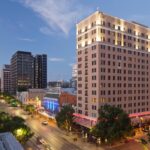Have you ever wondered which are the largest cities in the USA by population? This blog post takes you through the top 15, revealing how bustling metropolises like New York City, Los Angeles, and San Antonio shape the American landscape. You’ll discover not just the cities that millions call home but also the unique characteristics that make each one stand out.
The 2020 Census brought to light fascinating changes in population dynamics, highlighting the growth of metropolitan areas and the pivotal roles cities like San Diego, San Jose, and Dallas play in North America.
These urban giants are not just important for their size but also for their significant impact on the country’s development. Being home to millions, they drive economic growth, and cultural diversity and are often at the forefront of technological and social change. In this guide, you will get to know the top 15 biggest cities in the USA by population.
Introduction to the Largest Cities
The largest cities in the United States are not just mere points on a map; they are bustling metropolises that represent the dreams and aspirations of millions. These cities, which are under municipal government control, are the sources of innovation, cultural diversity, and economic growth. Each city, with its own unique municipal government, plays a pivotal role in shaping the country’s future.
Exploring these urban giants offers insights into the American way of life, showcasing the diversity and dynamism that define the United States. From the historical streets of Boston to the tech-savvy cityscape of San Francisco, the largest cities offer a mosaic of experiences that reflect the complexity and richness of American society.
The Significance of Population Data
Understanding the population of the largest cities, such as Los Angeles, is crucial for grasping the scale of urbanization in the United States. The population data not only reflects the size but also the diversity and economic potential of these metropolitan areas. It provides a snapshot of the demographic trends that are shaping the future of the country.
Moreover, population data helps in planning and resource allocation, ensuring that the needs of the diverse communities within metropolitan areas are met. It’s a tool for policymakers, businesses, and civic leaders to make informed decisions that impact millions of lives daily.
Related post: Best places to live in the USA
15 largest U.S. cities by population (Based on 2020 census)
The journey through the largest cities in the United States takes us from the East Coast to the West, and from the North down to the South. Each city, with its distinct character, plays a critical role in the fabric of the nation. Oklahoma City with its sprawling landscapes, San Diego with its stunning coastline, and San Jose with its tech-driven economy, each contribute uniquely to the diversity and dynamism of the United States.
North Carolina’s cities reflect the charm of the South, while Colorado Springs showcases the natural beauty of the West. Virginia Beach, with its serene shores, offers a different pace of life. These cities, among the largest in the United States, are not just population centers but are also cultural and economic powerhouses driving the nation forward.
1. New York, NY: 8,804,190
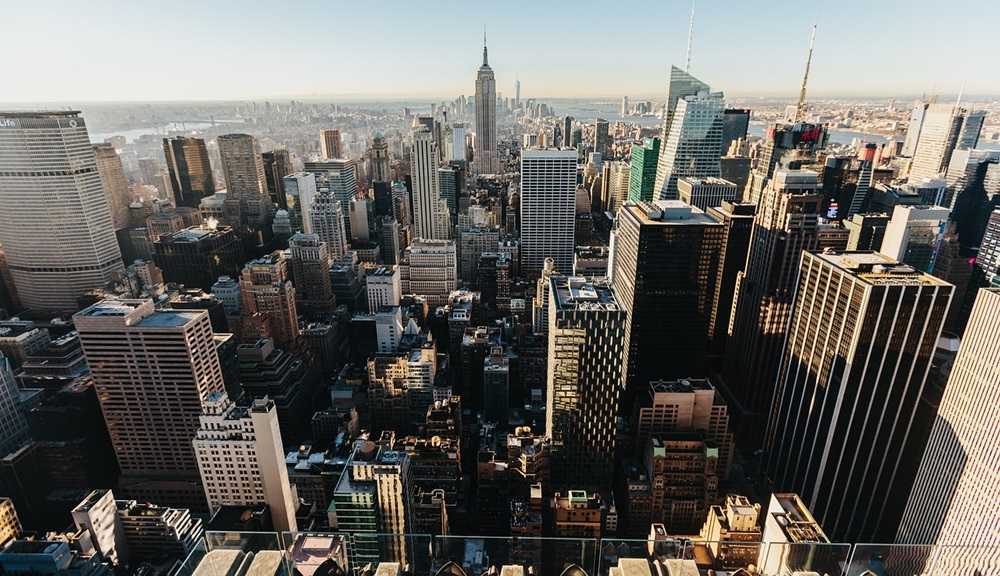
New York is the largest city by population in the U.S., and it embodies the heart of the United States’ urban landscape. This bustling metropolis is not just the most populous city in the country, with a population of 8,804,190, but also a global beacon of culture, finance, and media.
New York City is nestled at the southern tip of New York State, embracing five distinct boroughs: Manhattan, Brooklyn, Queens, Staten Island, and the Bronx.
It’s a global hub for culture, finance, technology, and media, profoundly influencing various sectors from commerce to art. Hosting the United Nations headquarters is pivotal to international diplomacy. With over 8.8 million people, it’s the densest major U.S. city, leading in linguistic diversity with 800 languages.
Its origins date back to a 1624 Dutch trading post, evolving into a key economic powerhouse with Wall Street at its core. New York’s metropolitan area is a global economic titan, it is also recognized as an investor’s haven and houses the world’s wealthiest individuals.
Iconic Attractions in New York City
- The Statue of Liberty: A towering symbol of freedom and democracy.
- Central Park: Is a green oasis offering a peaceful retreat amid the city.
- Empire State Building: Showcases Art Deco majesty with breathtaking city skyline views.
- Times Square: Known as the “Crossroads of the World,” it dazzles with neon lights and embodies New York’s vibrant spirit.
Related post: Best places to visit in New York State
2. Los Angeles, CA: 3,971,883
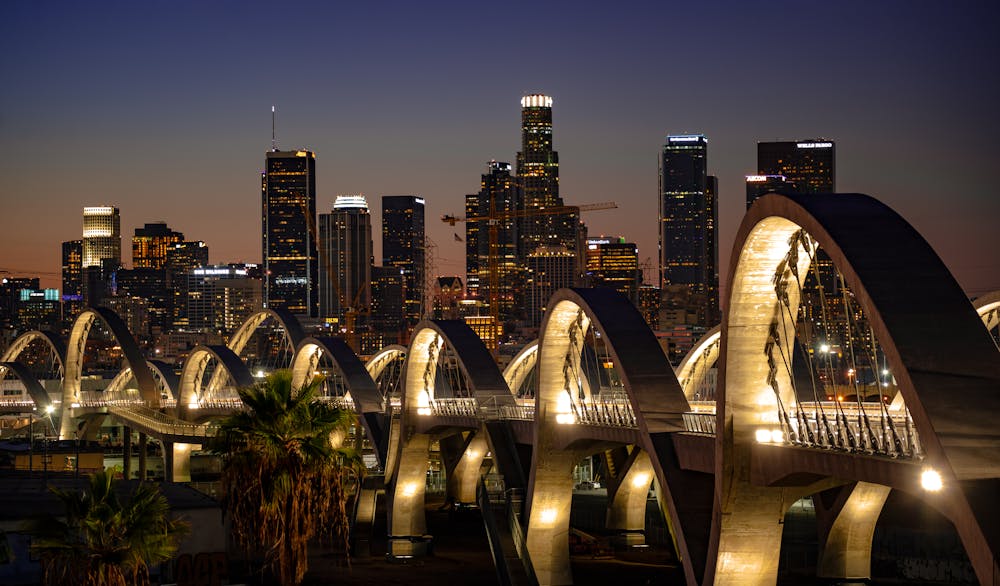
The city of Los Angeles is a sprawling city of dreams and stands as the second largest city in the United States with a population of 3,971,883. Known for its Mediterranean climate, ethnic diversity, and the entertainment industry, Los Angeles is a dynamic city where innovation and creativity flourish. The city’s vast size and population density have made it a melting pot of cultures, ideas, and aspirations.
As the home of Hollywood, Los Angeles has a global influence on media, music, fashion, and culture, making it a significant player on the world stage. Beyond entertainment, it’s a city of technological advances and environmental initiatives, constantly pushing the boundaries of what’s possible in urban living.
The city’s diverse ecosystems, from beaches to mountains, offer residents and visitors alike a unique blend of natural beauty and urban sophistication. Los Angeles’ commitment to cultural and recreational spaces contributes to its appeal as a major destination for people from all walks of life. And the city is one of the best places to visit in California.
Landmarks in Los Angeles
- The Hollywood Sign: Symbolizes the city’s renowned entertainment industry, perched high on the hills.
- Griffith Observatory: Offers astronomical insights and stunning views of Los Angeles.
- The Getty Center: Features a remarkable art collection in a visually stunning setting.
- Santa Monica Pier: Delivers a quintessential California experience with its festive atmosphere and historic charm.
3. Chicago, IL: 2,746,388
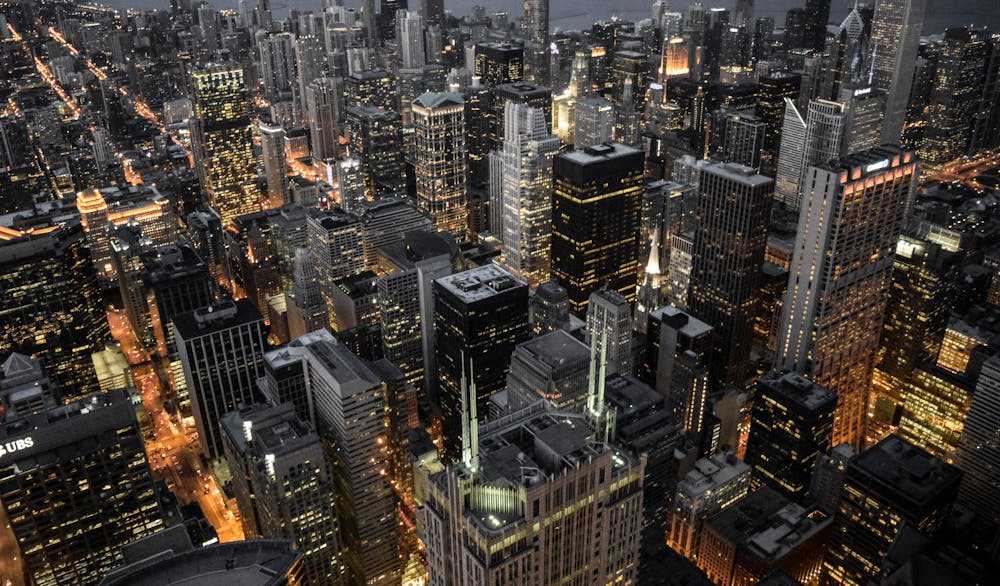
Chicago, the Windy City, is the third-largest city in the United States, boasting a population of 2,746,388. Situated on the shores of Lake Michigan, Chicago is renowned for its architectural innovation, vibrant arts scene, and diverse culinary landscape. The city’s rich history is reflected in its museums, parks, and historic districts, making it a cultural hub in the Midwest.
Chicago’s economy is as diverse as its population, with strong sectors in finance, manufacturing, and technology. The city’s commitment to public spaces, like the expansive Millennium Park, underscores its dedication to enhancing the quality of life for its residents and visitors.
The spirit of Chicago is characterized by its resilience and community strength. Despite difficulties, the city is still thriving thanks to a sense of unity and a relentless pursuit of progress. Chicago’s influence on jazz, blues, and comedy has left an indelible mark on American culture, making it a pivotal center for artistic expression.
Some of the landmarks in Chicago
- Willis Tower: Offers panoramic city views from its Skydeck.
- Millennium Park: Features the iconic Cloud Gate sculpture, known as “The Bean.”
- The Art Institute of Chicago: Houses an extensive collection of global artwork.
- Navy Pier: A hub for entertainment, shopping, and dining on Lake Michigan.
4. Houston, TX: 2,304,580
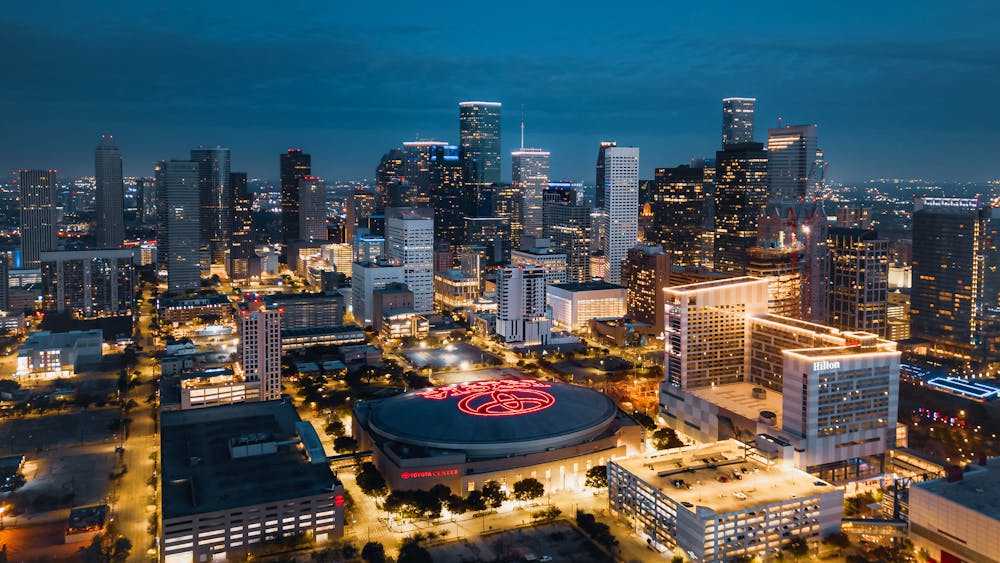
Houston, Texas, stands as a colossal city not just in terms of land but also population, making it the fourth most populous city in the United States. The energy industry, biomedical research, and aerospace are primarily responsible for its dynamic economy and vast size. This diversity is not just in its economic base but also in its population, making Houston a melting pot of cultures, cuisines, and traditions.
The city’s growth can be attributed to its strategic position in North America, serving as a global gateway with one of the largest and busiest ports in the world. Houston’s economy attracts people from across the nation and the globe, seeking opportunities in its booming industries. Furthermore, the city’s affordability compared to other major urban centers in the United States adds to its allure, drawing in a steady stream of new residents.
Education and innovation are key to Houston’s appeal. With top-tier universities and research institutions, the city is a hub for innovation, particularly in the fields of medicine and technology. These factors combine to make Houston not just a powerhouse in North America but a vibrant community where education, culture, and business thrive.
Houston, TX landmarks
- Space Center Houston: Dive into the heart of NASA’s space exploration history, featuring over 400 space-related artifacts and interactive exhibits. It’s an essential visit for space enthusiasts and families alike.
- Houston Museum of Natural Science: This museum stands out with its dynamic dinosaur exhibits that recreate prehistoric encounters, alongside a stunning jewelry vault and an indoor rainforest.
- The Museum of Fine Arts, Houston: One of the largest art museums in the U.S., offering a vast collection of artworks from Renaissance to contemporary African sculptures. Enjoy art with a cocktail in hand during their special Thursday events.
- The Menil Collection: Renowned for its extensive collection of Max Ernst works and contemporary art. The museum, designed by architect Renzo Piano, provides a serene environment to view art, free of charge.
- Buffalo Bayou Park: Explore this beautiful green space in the city, offering kayaking, stand-up paddleboarding, and cycling. The park is also home to the intriguing Cistern, a former drinking-water reservoir turned art space
5. Phoenix, AZ: 1,608,139
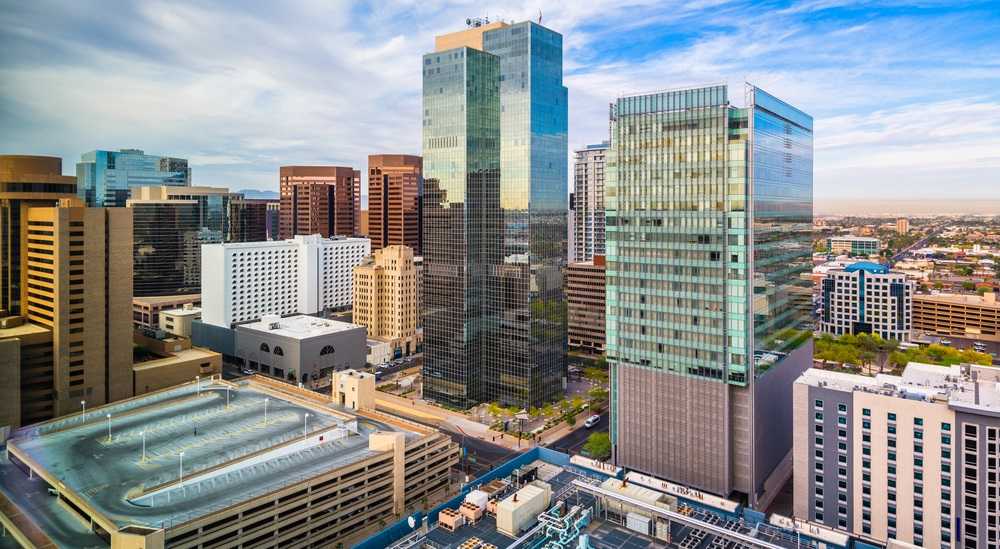
Phoenix, Arizona, emerges from the heart of the Sonoran Desert as a mirage turned reality, evolving into the fifth-largest city in the United States by population. The warm climate of this city, which draws retirees and tourists, and its thriving job market, particularly in the tech and healthcare sectors, are the main drivers of its remarkable growth trajectory. Phoenix’s appeal is broad, offering a blend of urban energy and outdoor living that’s hard to find elsewhere.
The city’s infrastructure supports a growing population, with developments in transportation and housing keeping pace with the influx of new residents. Phoenix’s investment in renewable energy sources and sustainable practices also signals its commitment to a future where development and environmental stewardship go hand in hand. This forward-thinking approach is a key driver of its population growth.
Phoenix isn’t just about the numbers; it’s a community where culture, arts, and recreation flourish. The city’s parks, museums, and galleries offer residents and visitors alike a chance to immerse themselves in the local culture, while its proximity to natural wonders like the Grand Canyon underscores the unique blend of urban and natural attractions that define Phoenix.
Phoenix, AZ Landmarks
- Desert Botanical Garden: A 140-acre space showcasing desert plants from around the world.
- Musical Instrument Museum: Home to over 8,000 instruments from nearly 200 countries.
- Taliesin West: Frank Lloyd Wright’s winter home and UNESCO World Heritage Site.
- Hiking Trails: Offers a range of outdoor activities with beautiful desert landscapes.
- Heard Museum: Dedicated to the art and culture of the Indian peoples of the Southwest.
6. Philadelphia, PA: 1,603,797

The city of Philadelphia, Pennsylvania, is rich in history and culture and stands as the sixth most populous city in the United States. Known as the birthplace of America, Philadelphia’s historical significance is unmatched, with landmarks that tell the story of the nation’s founding. Beyond its historical allure, Philadelphia is a modern urban center with a robust economy, a thriving arts scene, and diverse culinary offerings, making it a vibrant place to live and visit.
The city’s educational institutions, including several renowned universities and medical schools, attract students and professionals from around the world, contributing to its population growth. Additionally, Philadelphia’s strategic location on the East Coast, its economic opportunities, and its relatively affordable cost of living compared to other major cities make it an attractive place for newcomers.
Philadelphia’s commitment to community and culture is evident in its neighborhoods, each with its own unique character and charm. From the historic streets of Old City to the bustling markets of Reading Terminal Market, Philadelphia offers a blend of the old and new, where tradition meets innovation and community ties remain strong.
Iconic attractions in Philadelphia, PA
- Liberty Bell Pavilion: A symbol of freedom and independence, located at 143 South Third Street.
- Independence Hall: Known for the adoption of the Declaration of Independence and the United States Constitution.
- Independence National Historical Park: America’s most historic square mile, housing key historical sites.
- Philadelphia Museum of Art and the “Rocky Steps”: Home to a vast collection of art and the famous steps from the “Rocky” films.
- Reading Terminal Market: A bustling market with over 80 merchants, offering local produce, meats, and crafts at 51 North 12th Street.
7. San Antonio, TX: 1,434,625
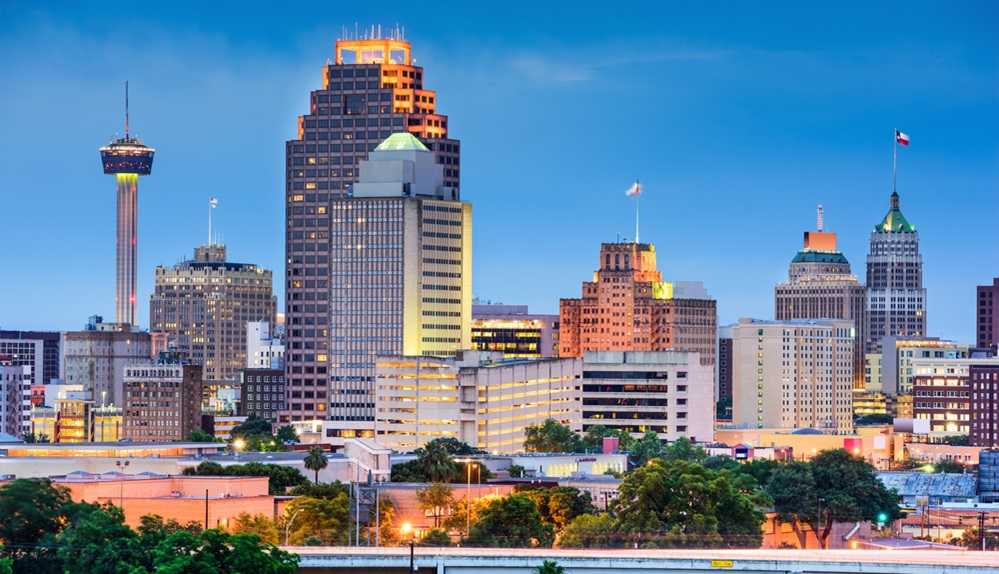
San Antonio, Texas, with a population of 1,434,625, radiates a unique charm that blends deep historical roots with vibrant contemporary life. This city, known for the pivotal role it played in the Texas Revolution, continues to honor its past while forging a dynamic future. San Antonio’s economy is buoyed by its tourism, military, and healthcare sectors, drawing a diverse populace to its heart.
The city’s appeal is magnified by its cost of living, which remains relatively low compared to other urban centers in Texas, making it an attractive destination for families and individuals alike. San Antonio’s cultural landscape is rich and varied, from its famed culinary scene, which includes Tex-Mex and barbecue, to the numerous festivals that celebrate the city’s Mexican-American heritage.
Education and community development are central to San Antonio’s growth strategy, with numerous initiatives aimed at improving schools and fostering a strong sense of community. These efforts, coupled with the city’s historical significance and modern attractions, make San Antonio a vibrant, welcoming city for residents and visitors.
Landmarks in San Antonio, TX
- San Antonio River Walk: A scenic network of walkways along the San Antonio River, featuring dining, shopping, and beautiful landscapes.
- The Alamo: A historic Spanish mission and fortress compound famous for the Battle of the Alamo.
- San Antonio Missions National Historical Park & Mission Trail: A UNESCO World Heritage Site showcasing four historic Spanish missions.
- San Fernando Cathedral & San Antonio|The Saga: The oldest cathedral in Texas, known for its “San Antonio|The Saga” video art projection.
- Natural Bridge Caverns: The largest commercial caves in Texas, offering tours, a rope course, and zip lines.
8. San Diego, CA: 1,386,932
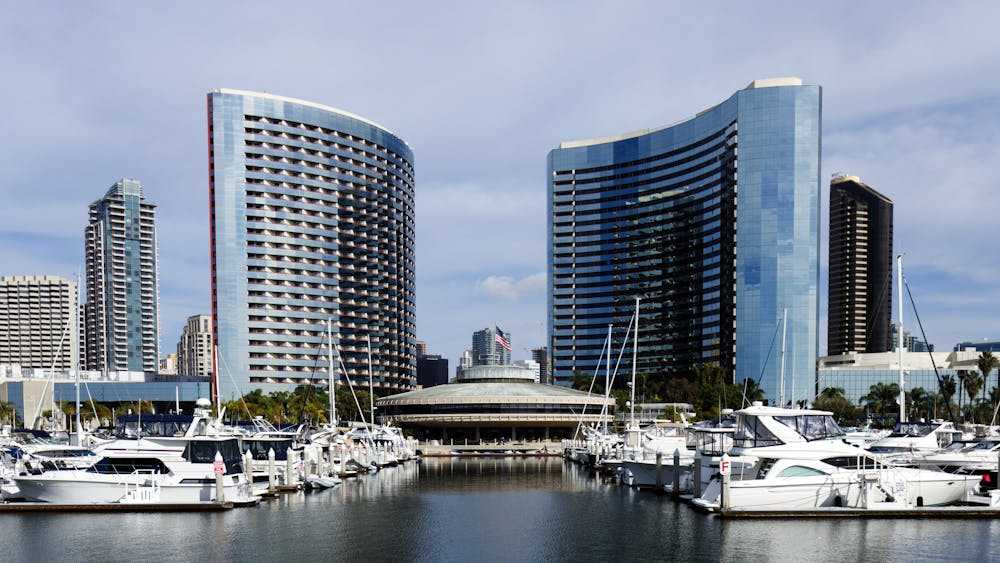
San Diego, California, shines as one of the fastest-growing cities in the United States, boasting a population of 1,386,932. Its growth is propelled by its idyllic climate, robust military presence, and thriving biotech industry. San Diego’s allure is multifaceted, offering sandy beaches, a burgeoning craft beer scene, and a laid-back lifestyle that attracts individuals from all walks of life.
The city’s commitment to innovation and sustainability is evident in its urban development and conservation efforts, making it a model for other cities aiming for balanced growth. San Diego’s economic landscape is diversified, with tourism, defense, and technology playing key roles. This economic diversity, coupled with the city’s natural beauty, makes it a magnet for talent and investment.
San Diego’s cultural richness is a testament to its diverse population, with vibrant neighborhoods that celebrate its Mexican-American heritage and more. The city’s educational institutions, from universities to research institutes, contribute to its reputation as a hub of innovation and learning. San Diego’s blend of natural attractions, economic opportunities, and cultural diversity makes it a compelling place to call home.
Landmarks in San Diego, CA
- El Prado Area: A grand promenade in Balboa Park lined with historic Spanish Revival architecture, housing several museums and cultural institutions.
- Old Mission Dam & Flume (Padre Dam): Located in Mission Trails Park, this historic irrigation structure marks the first major irrigation project on the Pacific coast.
- Fort Stockton: A site in Presidio Park fortified in 1828, significant for its role in the California revolt of 1847.
- Presidio of San Diego Site: The first permanent European settlement on the Pacific Coast, established by Spanish forces in 1769.
- San Diego Zoo: Located in Balboa Park, it’s one of the largest and most renowned zoos in the world, home to over 3,500 animals of more than 650 species and subspecies.
9. Dallas, TX: 1,304,379
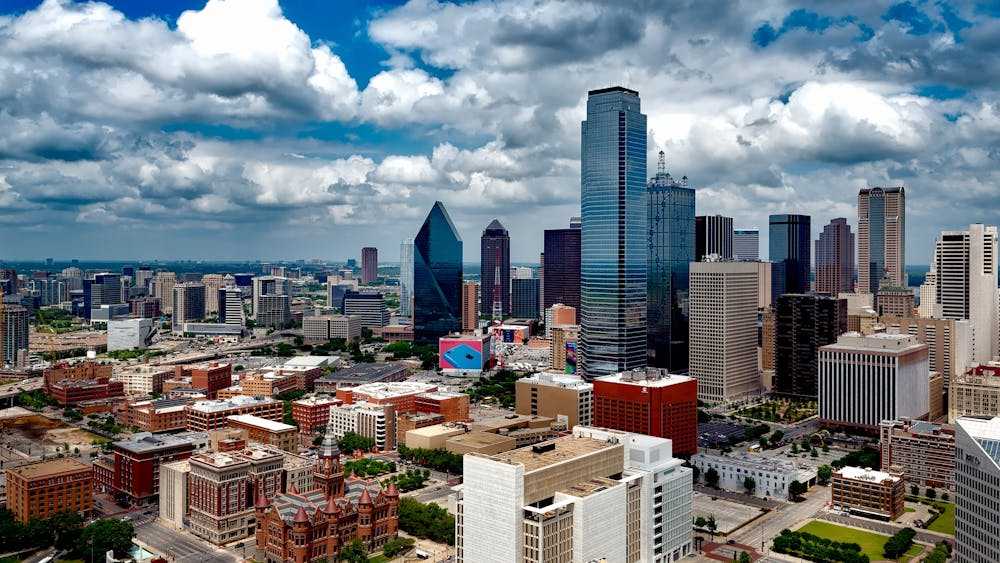
In the heart of Texas lies Dallas, a city known for its rich history, dynamic culture, and significant economic contributions. With a population of 1,304,379, it stands as a major player among the largest cities in the United States. Dallas is not just about size; it’s a hub for arts, technology, and sports, making it a pivotal part of the Texas identity.
The city’s growth is supported by a robust municipal government that focuses on sustainability and innovation. Dallas’s strategic position has made it a key logistical and cultural hub, attracting residents and businesses alike. Its diverse population contributes to a vibrant social fabric that is rich with various cultural influences and a strong sense of community.
Whether it’s the bustling streets of the downtown area or the serene landscapes of its suburbs, Dallas offers a unique blend of urban sophistication and traditional Texan charm. Its significance extends beyond its borders, influencing the economic and cultural landscape of the broader region.
Landmarks in Dallas, TX
Exploring Dallas reveals landmarks that capture the city’s spirit and history. The Reunion Tower, with its glowing ball, offers panoramic views of the cityscape. The historic Dealey Plaza, known for its significance to American history, invites contemplation. For art enthusiasts, the Dallas Museum of Art houses an impressive collection spanning centuries. Lastly, the Dallas Arboretum and Botanical Garden offers a tranquil retreat with its breathtaking floral displays and serene landscapes.
10. San Jose, CA: 1,013,240
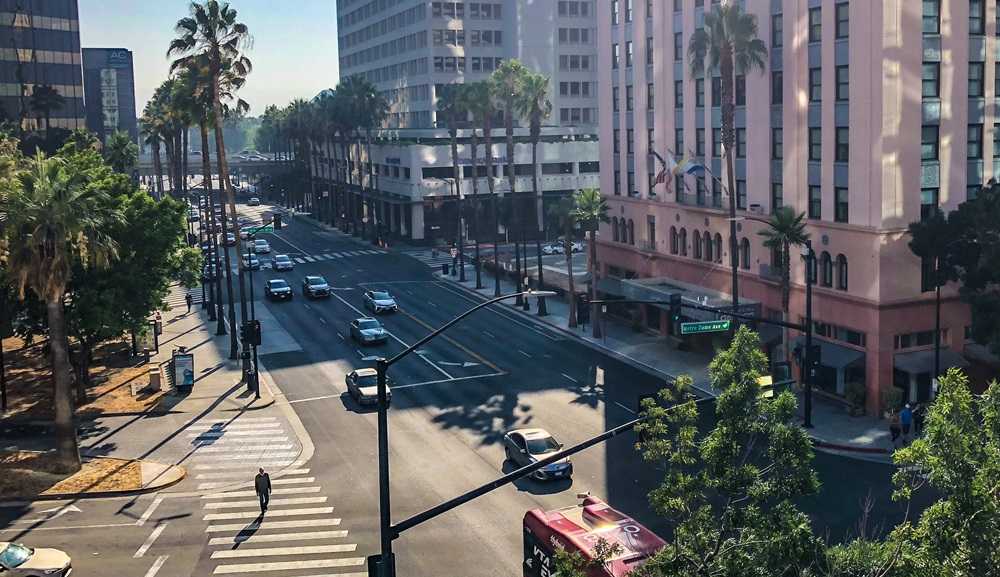
San Jose, nestled in the heart of Silicon Valley, stands as a beacon of innovation and growth. With a population of 1,013,240, it is not only the largest city in Northern California but also one of the fastest-growing cities in the nation. The fact that San Jose serves as a global technology hub and draws talent and companies from all over the world highlights its significance.
This city stands out for its remarkable diversity and high standard of living, making it a desirable place to call home. As one of the largest cities in the country, San Jose boasts a variety of cultural, recreational, and educational opportunities. Its municipal government is committed to fostering a community that values sustainability, inclusivity, and innovation.
San Jose’s urban landscape is characterized by a mix of modern high-rises and historic buildings, reflecting its journey from a farming community to a bustling metropolitan area. The city’s parks, museums, and vibrant neighborhoods offer a rich tapestry of experiences, reflecting the dynamic spirit of its residents.
Landmarks in San Jose, CA
- Winchester Mystery House: Architectural Oddities and Eccentric History.
- Tech Interactive: Is a cutting-edge science and technology center for creativity.
- History Park at Kelley Park: Historical buildings and exhibits showcasing the past.
- San Jose Museum of Art: Contemporary and modern art emphasizing regional diversity.
11. Austin, TX: 961,855
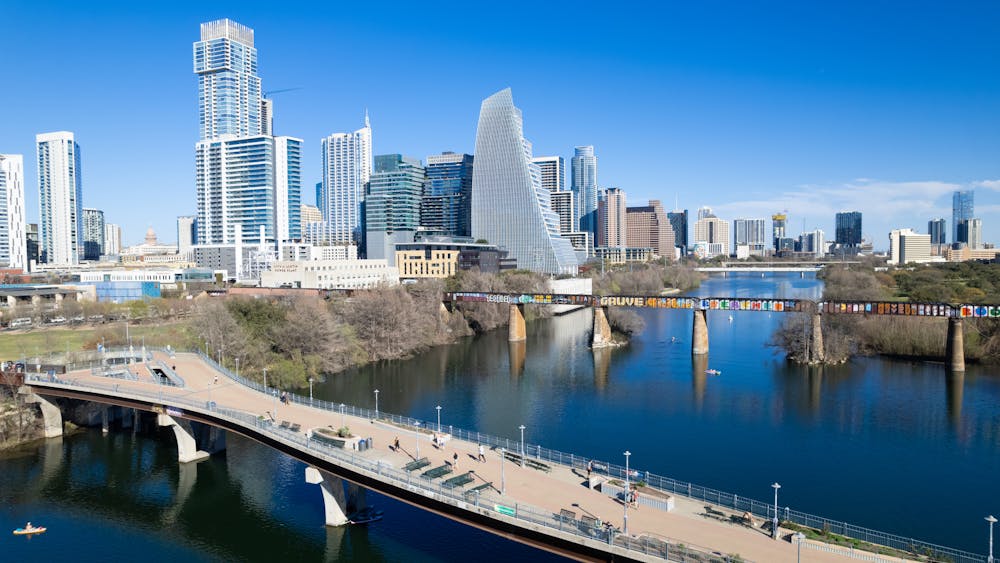
Austin, the capital of Texas, is not just a populous city; it’s a hub of culture, politics, and technology. Known for its vibrant music scene, Austin proudly bears the title of “The Live Music Capital of the World.” This city offers a unique blend of Texas tradition and a progressive mindset, making it a magnet for artists, tech professionals, and entrepreneurs alike.
Despite its rapid growth, Austin maintains a laid-back atmosphere, with outdoor spaces like Zilker Park and Lady Bird Lake offering residents and visitors alike a chance to connect with nature. The city’s commitment to sustainability and innovation is evident in its thriving startup ecosystem and green initiatives. Austin’s diverse culinary scene, ranging from food trucks to high-end restaurants, reflects its eclectic culture.
Education plays a significant role in Austin’s community, with the University of Texas at Austin being a major influence. This institution not only shapes the city’s youthful demographic but also contributes to its status as a leading research and technology hub. Austin’s dynamic mix of music, art, technology, and education creates a vibrant, forward-thinking city that continues to attract people from all over the world.
Landmarks in Austin, TX
- The Texas State Capitol: A symbol of Texas history and politics with impressive architecture.
- The University of Texas at Austin: Known for its academic excellence and historic campus.
- Lady Bird Lake: Offers a scenic setting for outdoor activities in the heart of Austin.
- Bat Colony at Congress Avenue Bridge: Famous for the nightly emergence of Mexican free-tailed bats, attracting spectators
12. Jacksonville, FL: 949,611
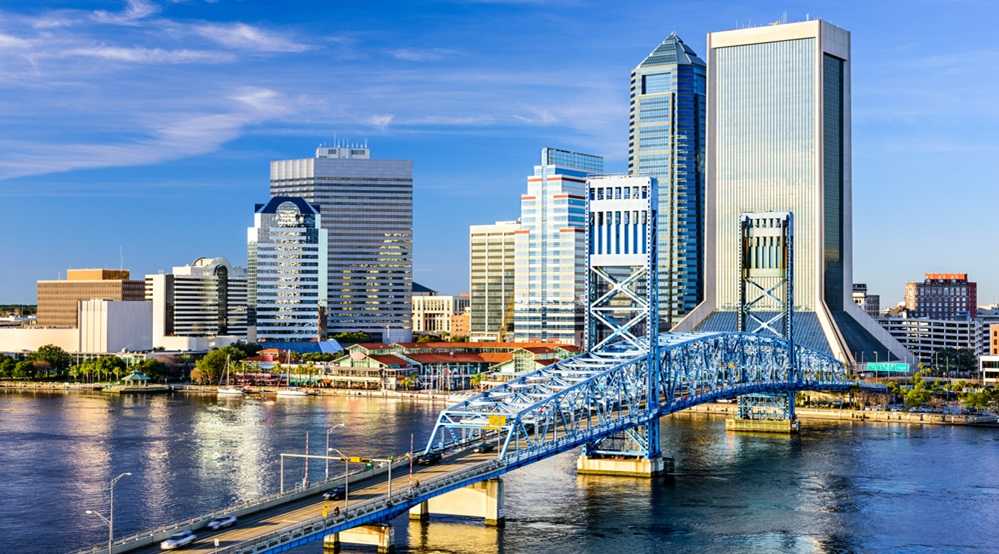
Jacksonville, a sprawling and populous city in northeastern Florida, offers a unique blend of urban charm and natural beauty. It’s not just its size that makes Jacksonville stand out, but its vast array of beaches, parks, and cultural sites. This city is a paradise for those who love the outdoors, with miles of sandy beaches and the St. Johns River winding through its heart.
The city’s cultural and historical attractions offer a glimpse into its rich heritage. From the vibrant arts scene in the Riverside and Avondale neighborhoods to the historical significance of the Kingsley Plantation, Jacksonville is a city with stories to tell. The city also takes pride in its sports culture, being home to the NFL’s Jacksonville Jaguars.
Jacksonville’s economy is as diverse as its population, with strong sectors in banking, healthcare, and logistics. The city’s port is one of the largest in the U.S., playing a crucial role in both domestic and international trade. Jacksonville’s blend of economic opportunity, cultural richness, and natural beauty makes it an attractive place to live and visit.
Landmarks in Jacksonville, FL
Jacksonville’s landmarks showcase its diverse appeal. The Cummer Museum of Art & Gardens combines fine art with stunning riverfront gardens. The Jacksonville Zoo and Gardens offers a close look at global wildlife. For history enthusiasts, the Fort Caroline National Memorial provides insights into the area’s early European settlers. Lastly, the Friendship Fountain, with its spectacular water display, is a favorite gathering spot, symbolizing the city’s welcoming spirit.
Related post: Best places to live in Florida with family
13. Fort Worth, TX: 918,915
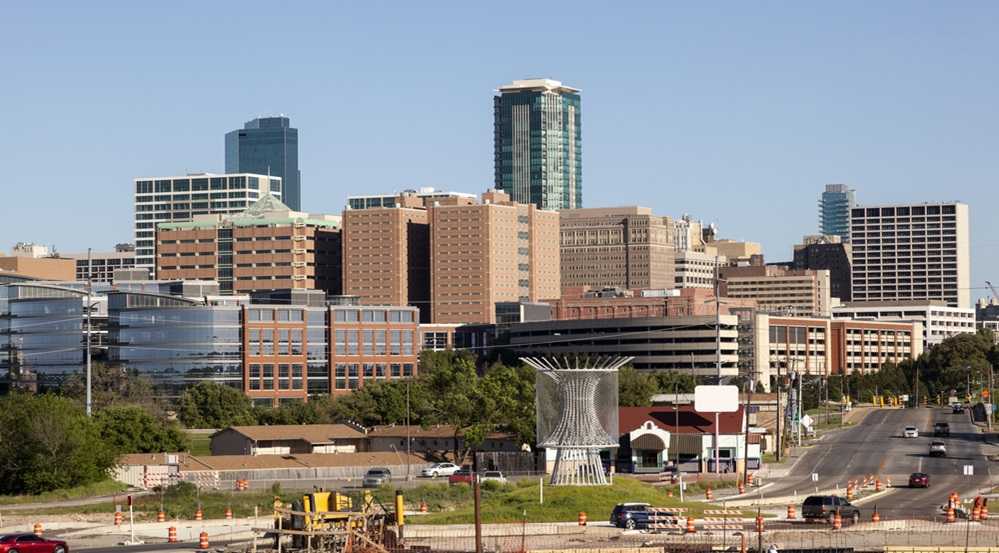
Fort Worth, Texas, stands as a testament to the enduring spirit of the American West. This city, teeming with history, has managed to blend its cowboy heritage with a modern urban framework. Known as “Where the West Begins,” Fort Worth offers a unique cultural experience, from rodeos and cattle drives in the Stockyards to world-class museums and performances in the Cultural District.
The city’s economy thrives on a diverse mix of industries including aviation, healthcare, and manufacturing. This economic diversity, coupled with a rich cultural tapestry, makes Fort Worth an attractive destination for both businesses and families. The city’s commitment to community and the arts can be felt in its bustling downtown, where historic architecture meets contemporary design.
Fort Worth’s education system and family-friendly attractions, like the Fort Worth Zoo, contribute to its reputation as a great place to raise a family. The city’s green spaces, like the Fort Worth Botanic Garden, offer peaceful retreats from the urban landscape. With its blend of tradition and progress, Fort Worth embodies the heart and soul of Texas.
Landmarks in Fort Worth, TX
- Fort Worth Stockyards National Historic District: Celebrates cowboy heritage with rodeos and honky-tonks.
- Kimbell Art Museum: Notable for its architectural design and extensive art collection.
- Fort Worth Botanic Garden: Offers a peaceful retreat with beautiful landscapes and themed gardens.
14. Columbus, OH: 905,748
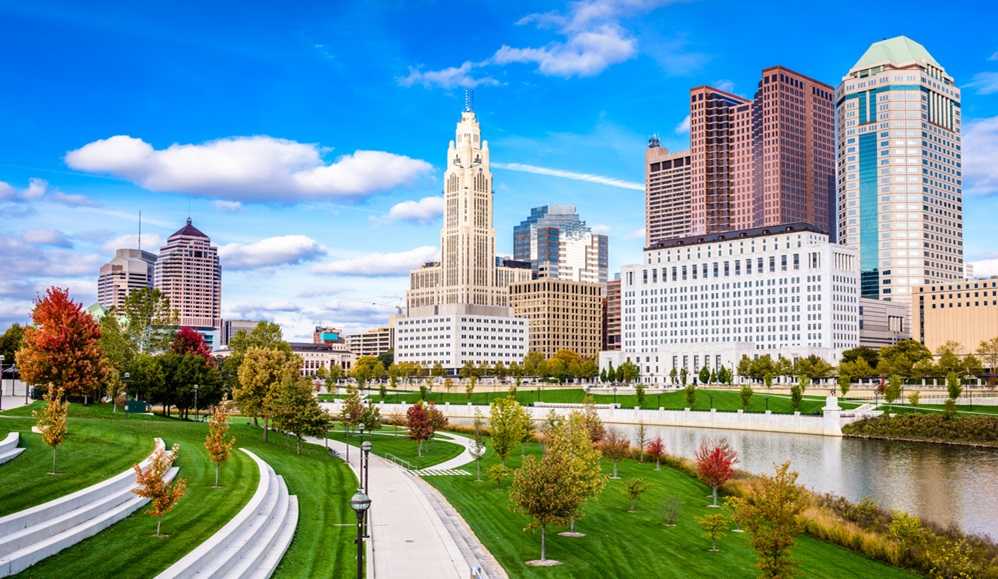
The city of Columbus is the capital of Ohio, and it is a city that thrives on innovation and diversity. As a populous city, it boasts a dynamic blend of businesses, cultural institutions, and educational establishments. The presence of Ohio State University injects youthful energy and contributes significantly to the local economy and culture.
Columbus’s economic environment is characterized by a strong presence in technology, healthcare, and education, making it a magnet for talent and investment. The city’s dedication to arts and culture is evident in its numerous festivals, museums, and galleries. Columbus’s commitment to inclusivity and community engagement makes it a model for urban development.
The city’s parks and recreational spaces, such as the Scioto Mile, offer residents and visitors alike a chance to enjoy outdoor activities against the backdrop of the city skyline. With its progressive spirit and welcoming atmosphere, Columbus stands as a beacon of growth and opportunity in the Midwest.
Landmarks in Columbus, OH
- Ohio Statehouse: Center of state government with notable architecture.
- Columbus Museum of Art: Features American and European art collections.
- Scioto Mile: Scenic urban greenspace along the river for leisure and events.
- Franklin Park Conservatory and Botanical Gardens: Exhibits exotic plants and glass greenhouses.
15. Charlotte, NC: 874,579
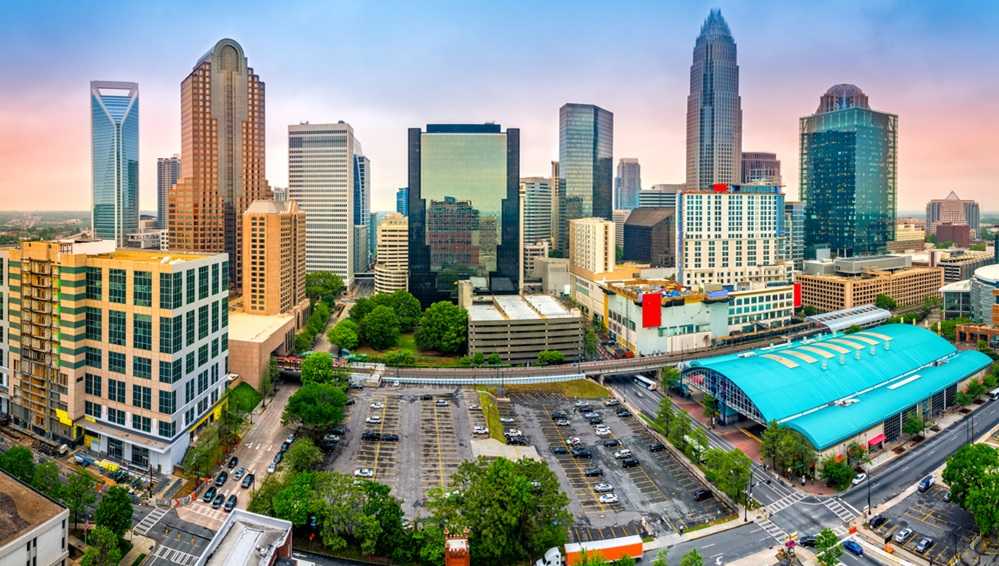
Charlotte, North Carolina, combines the charm of the New South with the bustling energy of a major urban center. As a populous city, Charlotte is known for its financial institutions, including being the home of Bank of America’s headquarters, which underscores its status as the second-largest banking center in the United States after New York City.
The city’s cultural scene is vibrant, with numerous museums, theaters, and music venues offering a rich array of entertainment and educational opportunities. Charlotte’s commitment to sports is evident in its passionate support for the NFL’s Carolina Panthers and the NBA’s Charlotte Hornets. The city also places a high value on education, with a range of institutions that contribute to its dynamic and educated workforce.
Charlotte’s green spaces and parks, such as Freedom Park, provide residents and visitors with a welcome escape from the urban environment. The city’s ongoing development projects continue to enhance its infrastructure and quality of life, making Charlotte an increasingly attractive place to live and work.
Landmarks in Charlotte, NC
- NASCAR Hall of Fame: Celebrates the sport’s history and connection to Charlotte.
- Billy Graham Library: Explores the life of the influential evangelist.
- Mint Museum: Displays diverse art collections spanning centuries.
- U.S. National Whitewater Center: Offers outdoor activities, highlighting Charlotte’s outdoor recreation commitment.
What these cities tell us about the United States
The populous cities across the United States, including San Jose, Austin, Jacksonville, Fort Worth, Columbus, and Charlotte, tell a story of diversity and dynamism. These cities, with their unique landmarks, cultures, and economies, showcase the varied fabric of American life. From the tech hubs of San Jose to the financial centers in Charlotte, each city contributes to the nation’s identity.
The 2020 census and information on incorporated places in the United States reveal that America’s urban landscapes are continually evolving. These populous cities are at the forefront of change, driving innovation, culture, and economic growth. Their development reflects broader trends in urbanization, diversity, and technology, highlighting the ongoing evolution of the American dream. As these cities grow, they offer insights into the challenges and opportunities that define the United States today.
The Ongoing Evolution of Urban Centers
The biggest cities in the USA by population are not just growing; they are evolving. As you’ve seen, these urban centers have rich histories and landmarks that draw people from all over the world. But what’s truly fascinating is how they adapt to the challenges of the 21st century. Cities like New York, Los Angeles, and Chicago are constantly innovating to become more sustainable, livable, and technologically advanced. This evolution is a testament to the resilience and forward-thinking of these metropolitan giants.
Moreover, the dynamics of these urban centers reflect broader societal trends. For instance, the push for green spaces, public transportation improvements, and smart city initiatives show a commitment to environmental sustainability and quality of life. The ongoing evolution of these cities also underscores the importance of adapting to new technologies and the shifting demands of their diverse populations. As these cities continue to grow and change, they set the pace for the rest of the country in terms of urban development and innovation.
Final Thoughts: Largest cities in the USA by population
Exploring the biggest cities in the USA by population reveals much more than just numbers. It shines a light on the vibrant cultural tapestry that makes up the urban areas of the country.
Each city has unique experiences. They range from New York, NY, the country’s largest city, to the bustling streets of Charlotte, NC. These experiences contribute to the nation’s identity. These cities are not just economic powerhouses but are also centers of innovation, culture, and diversity, reflecting the evolving American dream.
As you’ve journeyed through the list of the 15 biggest cities in America, it’s clear that the allure of urban life continues to draw people in. Whether it’s the historical landmarks, the culinary diversity, or the endless opportunities for personal and professional growth, these cities are where dreams take flight. The continuous growth and evolution of these urban centers underscore their significance in shaping the future of the United States, making them not just places to live, but destinations where the pulse of the nation can truly be felt.
FAQs: 15 Largest US cities by population
1. What are the largest cities in the United States by population?
The largest cities in the United States by population are determined based on data from the United States Census Bureau. Aside from those mentioned above, some of these cities include Kansas City, Jacksonville, Oklahoma City, San Francisco, Anchorage, Jersey City, Louisville, and Lexington.
2. How is the population of these cities calculated?
Typically, the US Census Bureau conducts a census to determine the population of the largest cities in the country. The most recent data available, as of 2022, provides insights into the population sizes of these metropolitan areas.
3. Which ones are the most populous cities in the country?
The largest city in the United States by population is usually considered the city with the highest number of residents. Cities like New York City, Los Angeles, and Chicago often top the list.
4. What is the significance of the census in determining city populations?
The United States Census plays a vital role in providing accurate and up-to-date information about the population of various cities in the U.S. This data is essential for resource allocation, policy-making, and urban planning.
5. Are there any notable trends in the population growth of these cities?
The 2020 Census revealed several interesting trends in population growth across the largest cities by population. Some cities experienced rapid growth, while others saw a decline in residents.

